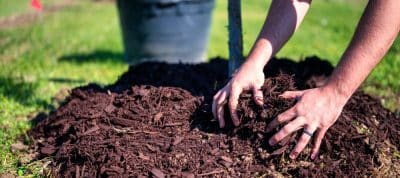
Winter brings beautiful snowy landscapes and festive cheer, but it also makes driving pretty dangerous with all the icy roads. Thankfully, we’ve got road deicing crews working hard to make winter driving safer. In this article, we’ll learn about the different ways roads get de-iced, from old standards like rock salt to newer liquid deicers. We’ll find out how road brine for sale works its magic, why bulk road salt suppliers are so convenient, and what makes liquid deicers a modern twist. Each deicing method has its own pros and cons, so by the end of this article, you’ll know how to choose the right deicers to keep winter roads safe where you live.
The Role of Road Brine
Road brine has emerged in recent years as a preemptive strike against winter’s icy stranglehold. It’s a saltwater solution applied to roads before the first snowflakes fly, working its anti-icing magic and preventing snow and ice from getting a stubborn foothold on road surfaces.
A major advantage of road brine is that it packs a punch even in subzero temps, unlike plain old rock salt, which needs the warmth of passing traffic to reach its full de-icing potential. Road brine is ready to start battling ice and snow the moment it’s spread, regardless of the thermometer reading. This makes it an extremely valuable tool for keeping wintry roads clear and safe.
Many cities and counties mix up their own batches of road brine, but you can also purchase it commercially. For smaller towns and private snow removal outfits looking to get ahead of winter weather, having the option to buy pre-made road brine can be a game-changing convenience.
The Mighty Ice Away Rock Salt
When it snows, what’s one of the first things that comes to mind for clearing the roads? Good ol’ rock salt. This wintertime staple has been a trusty go-to for road crews for years. But why is it so popular, and how does it work its magic?
Rock salt, also known as sodium chloride, helps melt snow and ice when it’s spread on roads. It lowers the freezing point, turning solid winter surfaces into slush and eventually a salty brine. This briny mix further breaks the icy bond to the pavement, making it easier to plow aside snow and improve traction.
Ice away rock salt’s tried and true reliability makes it a usual suspect for many towns and road crews. It’s cost-effective and gets the job done, often by the ton. But it’s key to use it wisely, as too much can negatively impact the environment, like polluting soil and water.
Bulk Road Salt Suppliers: Ensuring a Steady Supply
Bulk road salt suppliers are a winter lifeline for those dealing with miles of roads to keep clean and safe. Snowstorms are unpredictable – the demand for salt can skyrocket with a sudden dumping of snow. Bulk suppliers ensure a steady supply of salt is on hand when it’s needed most.
These bulk suppliers play an indispensable role in winter road maintenance. They provide the tons of salt that municipalities, transportation departments, and contractors need to treat their networks of roads. Bulk suppliers have the infrastructure and logistics to efficiently deliver huge quantities of salt.
Buying salt in bulk also saves money compared to smaller quantities. The savings add up when you’re responsible for hundreds of lane miles. But it takes forethought to store and move around all that bulk salt. You have to plan ahead.
Liquid Road Deicer: A Modern Solution
In recent years, liquid road deicers have started gaining traction as a modern approach to the age-old winter road maintenance puzzle. These liquids come in all sorts of recipes, but they’re united by a common mission: to melt snow and ice on roads quickly and effectively.
The big selling point of liquid deicers is that they get to work right away when they make contact with snow or ice. This makes them super handy for treating roads before, during, or after a storm hits. Since liquid deicers can be sprayed on using specialized equipment, the process is more precise and efficient.
One of the popular liquid deicers is calcium chloride, known for kicking into high gear even in extremely cold temps. It works at lower temperatures than old-fashioned rock salt. Magnesium chloride is another option – it’s less corrosive than calcium chloride, so some prefer it for certain uses.
Choosing the Right Deicing Solution
Figuring out the right deicing solution takes some thinking. What works best depends on a bunch of things, and using a mix of methods is often smart.
You’ve got to think about how well each deicer handles your specific winter weather. Salt brine and liquid deicers really do the trick when it’s super cold, but regular rock salt works fine in many situations.
Cost matters too – rock salt is usually the cheapest, especially when bought in bulk. Liquid deicers cost more upfront, though.
Don’t forget about how deicers affect the environment. Rock salt gets the job done, but it can hurt water and plants when it washes away. Liquid deicers are gentler there, but you still need to use them carefully.
Also, consider what equipment you have to spread deicers. Liquids need specialized gear, while rock salt can go down with normal spreaders. Brine may need its own sprayers.
And check local rules on deicers – some places restrict what you can use.
Conclusion
As the cold winds of winter set in, cities, towns, and companies alike face an important decision: what deicers should they use to keep the roads safe? Each option, from good old rock salt to high-tech liquids, has its own pros and cons. In the end, a mix of methods usually works best. The goal is to make driving less perilous once flurries fill the air, without harming the environment around us. So when icy roads become a reality again this winter, remember: that the choices we make about melting snow and ice can greatly affect both our communities and our planet. If we choose thoughtfully, we can face the winter weather challenges with safety and care in mind.








